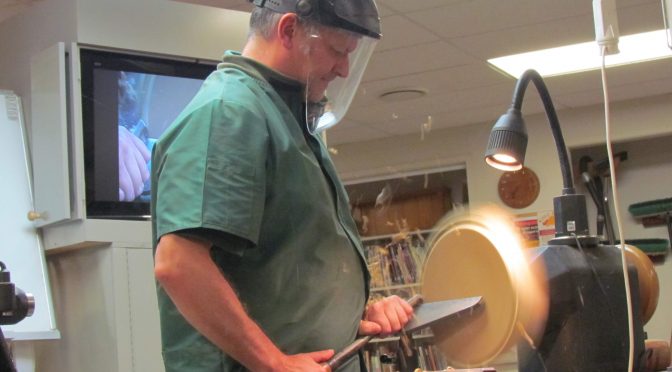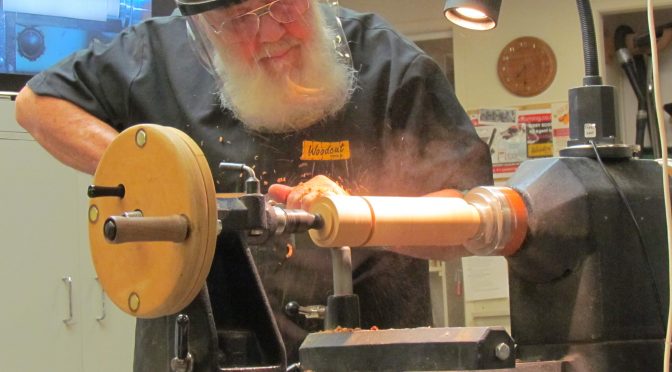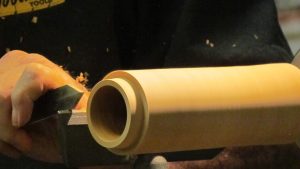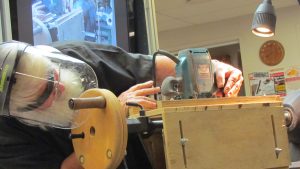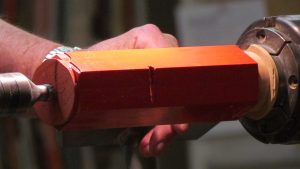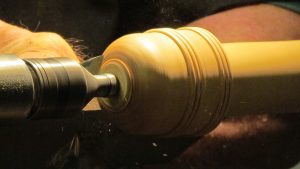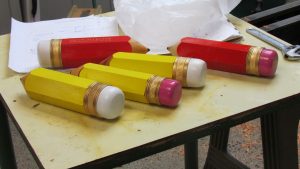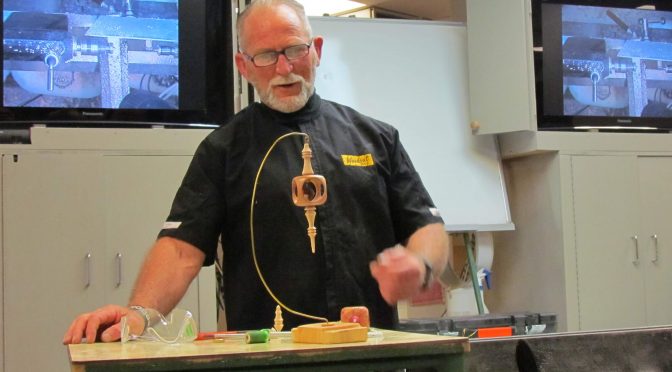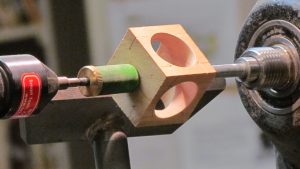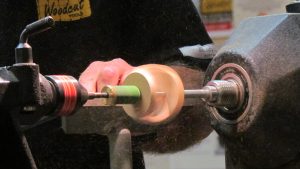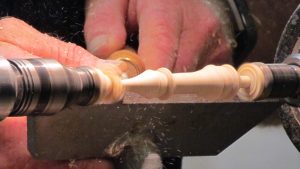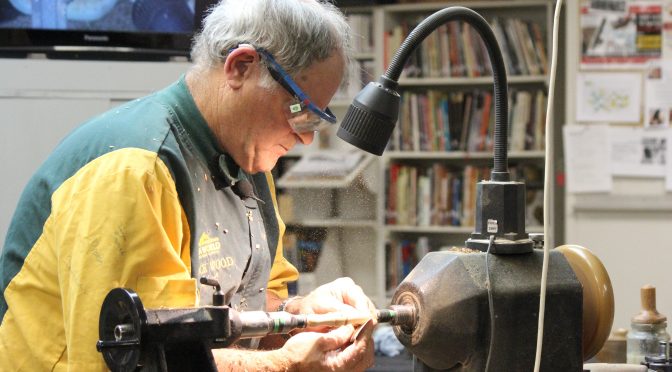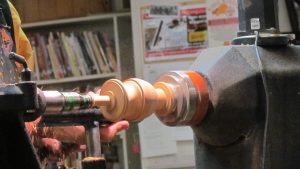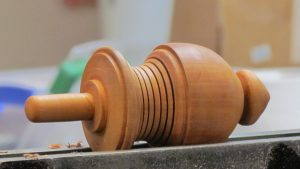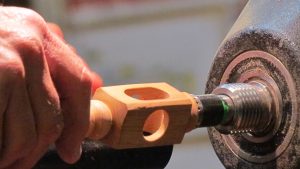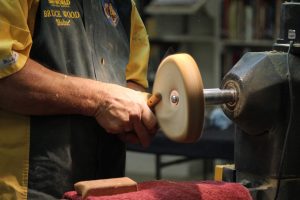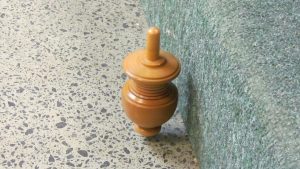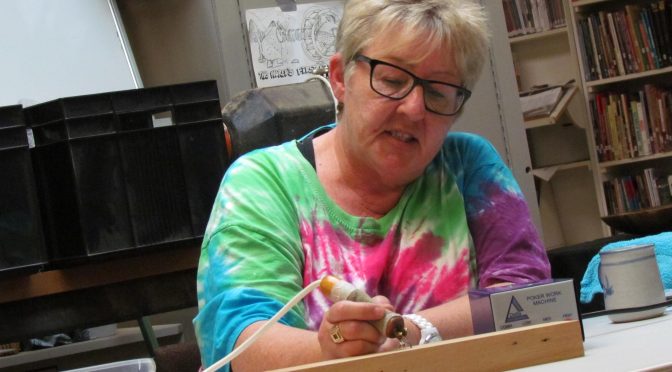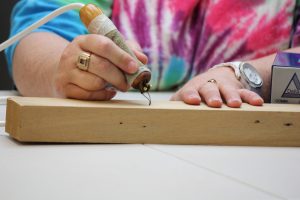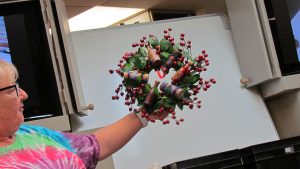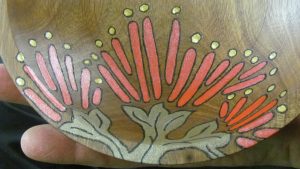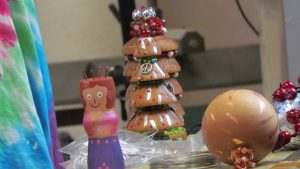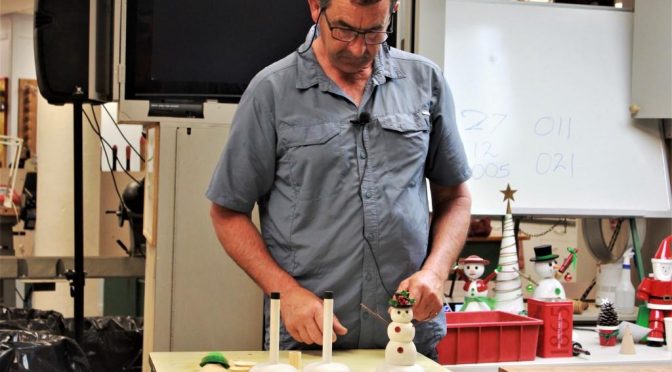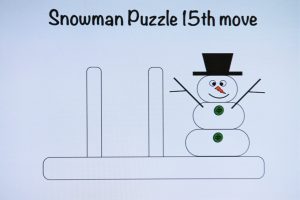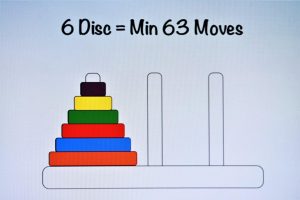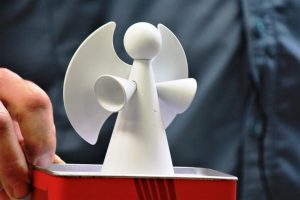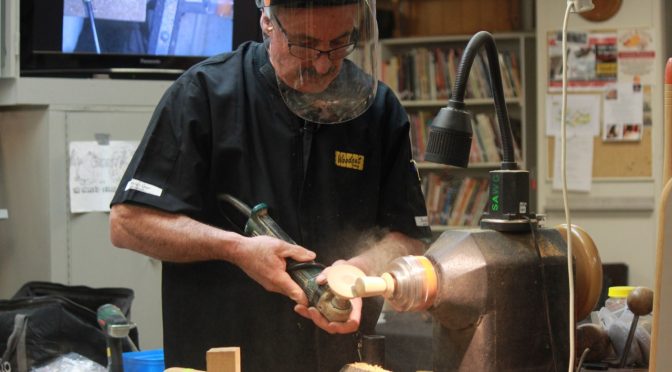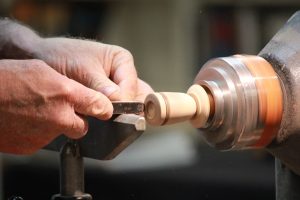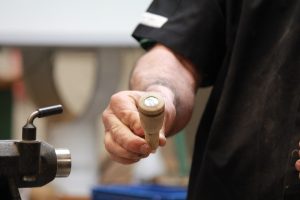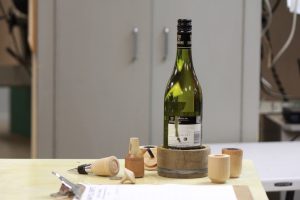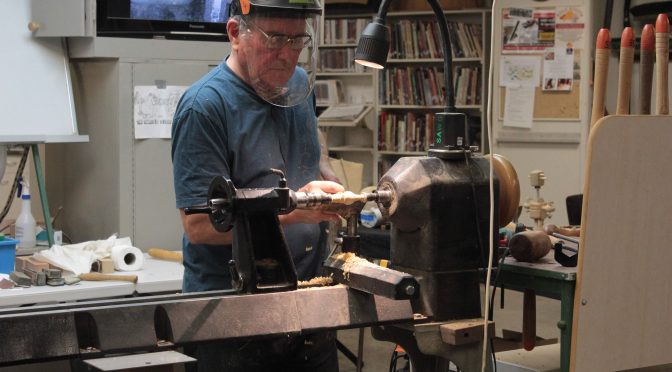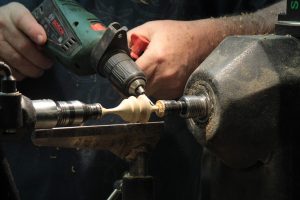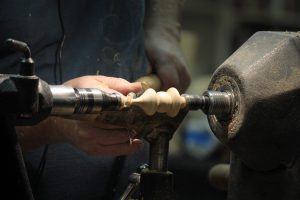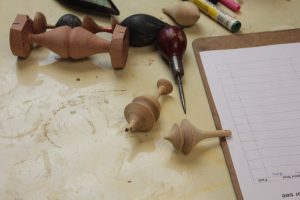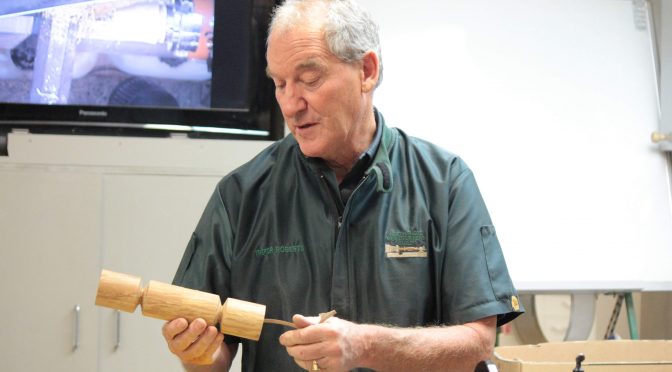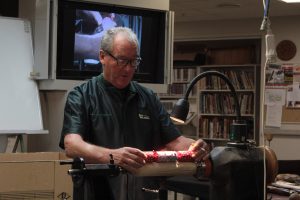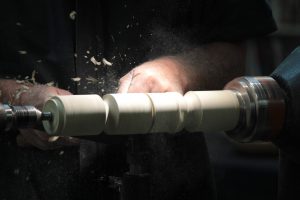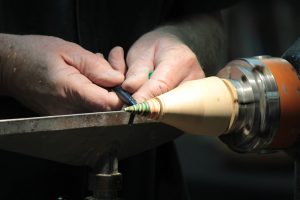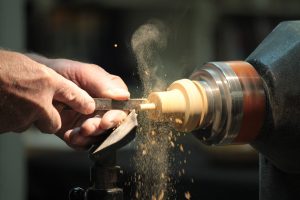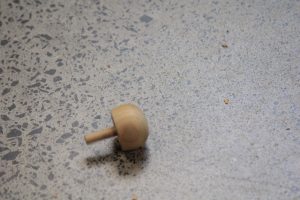Club Meeting: 12 December 2018
Report by Murray Wilton
President (not for life) Ian Connelly was the last presenter for 2018. He chose a challenging and difficult subject, German ring-turning, about which very little is known. In fact, if you Google it you will get few hits unless you go to a German site (<www.reifentiere.de>) and have enough German language to interpret what you see. However, the associated YouTube videos are so shielded by the turner that it’s almost impossible to see what’s going on. Ian’s presentation was inspired by a German ring-turning inspired piece he won at auction at this year’s Symposium, a New Zealand fantail, turned and carved from a bowl round by expert Derek Weidman. With little to follow in the way of plans or instructions, Ian worked out the detail for himself.
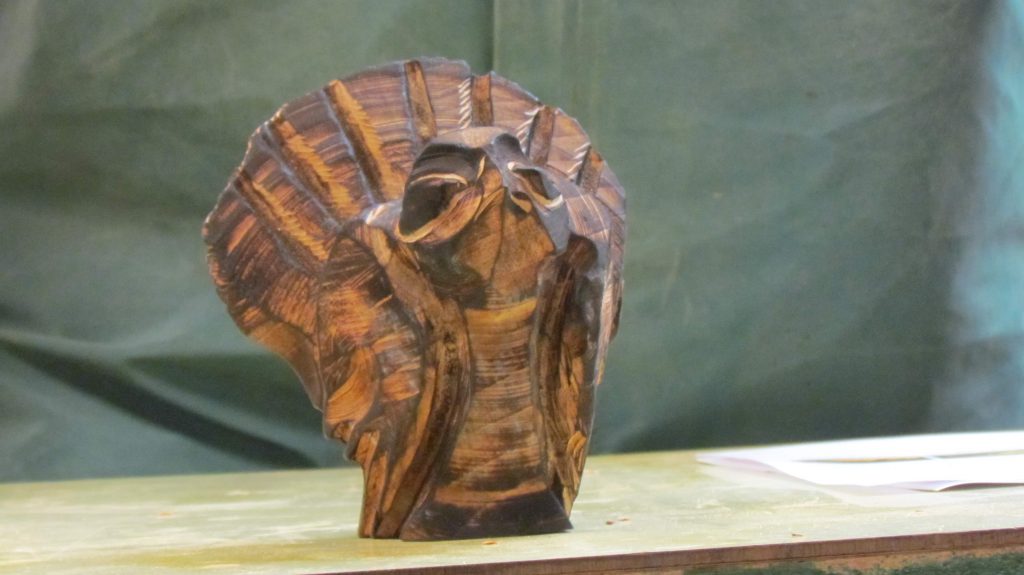
Displaying his turning skills, Ian started with a 250 X 250 mm square of kahikatea, not even rounded with the bandsaw. As he said, he could have cut the corners off, but intrepid and skilled turners don’t need to do that. Ian reminded novice turners to ensure the mounting screw is tight up against the flange and firmly and evenly snug against the chuck. If not it will be moved by centrifugal force and nothing will work after that.
Using a large bowl gouge (Ian showed us an even more massive tool but didn’t use that one) and running the lathe at 600 rpm, Ian transformed a perfect square to a round in minutes, rounding off the inner and outer edges to make the next steps safer. Next a wedge is removed from the round, using a band saw, and a profile of a kiwi is glued to one face. The extremities of the kiwi shape (feet, body curves, beak) are marked on the round and then turning from the face side with a bowl gouge begins. Frequent stops are needed to ensure that the shape is being correctly followed.
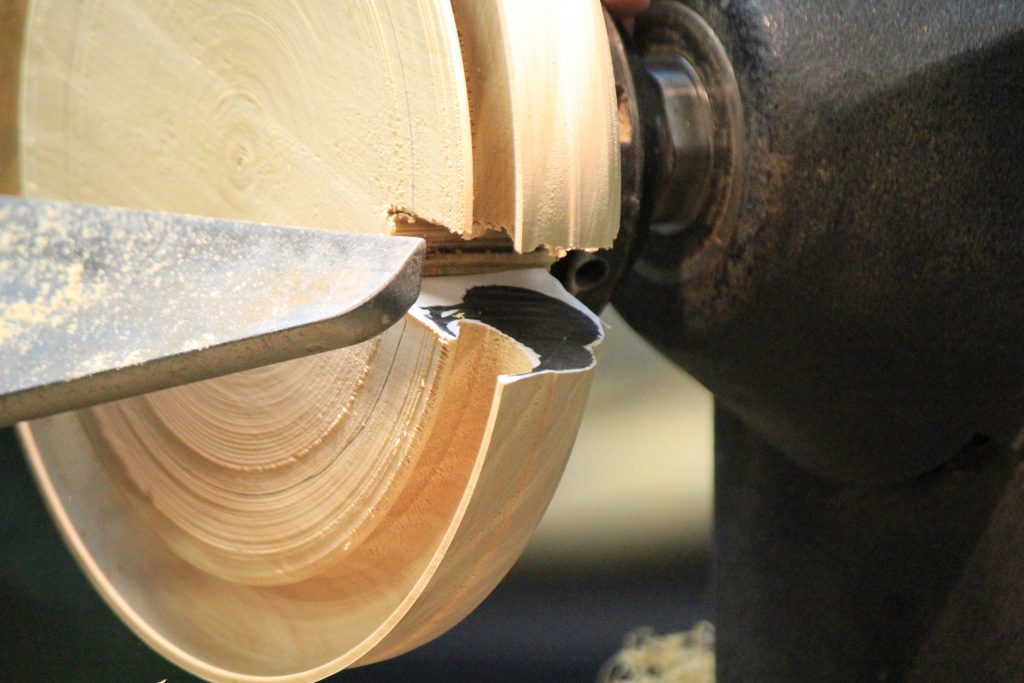
The completed kiwi is then cut out from the round and can be finished with the dremel or carving tools. Alternatively the kiwi can be left 2-dimensional and used as hangings on the Christmas tree or other ornamental possibilities. Multiple kiwi or other animals or shapes can be turned from one round.
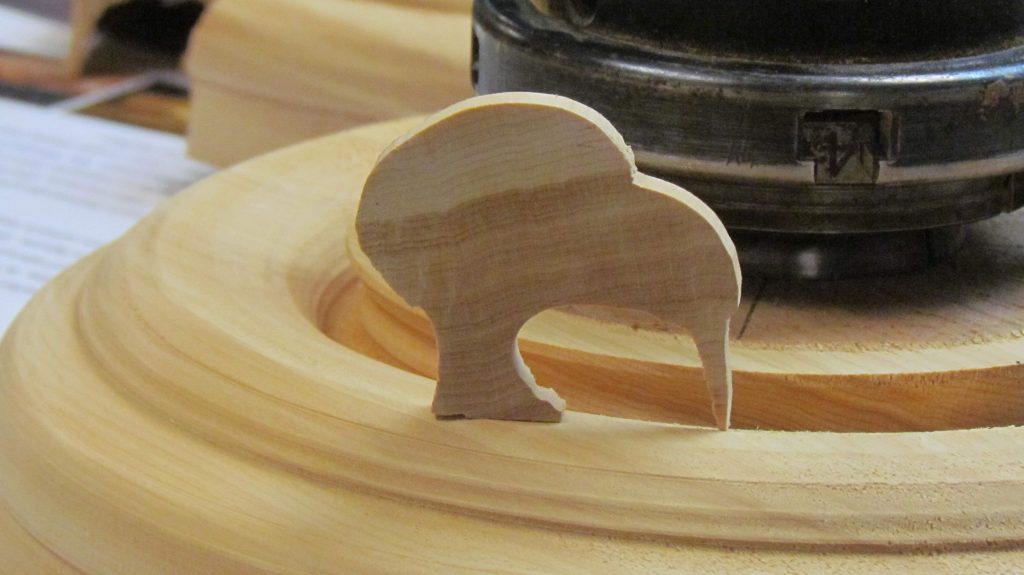
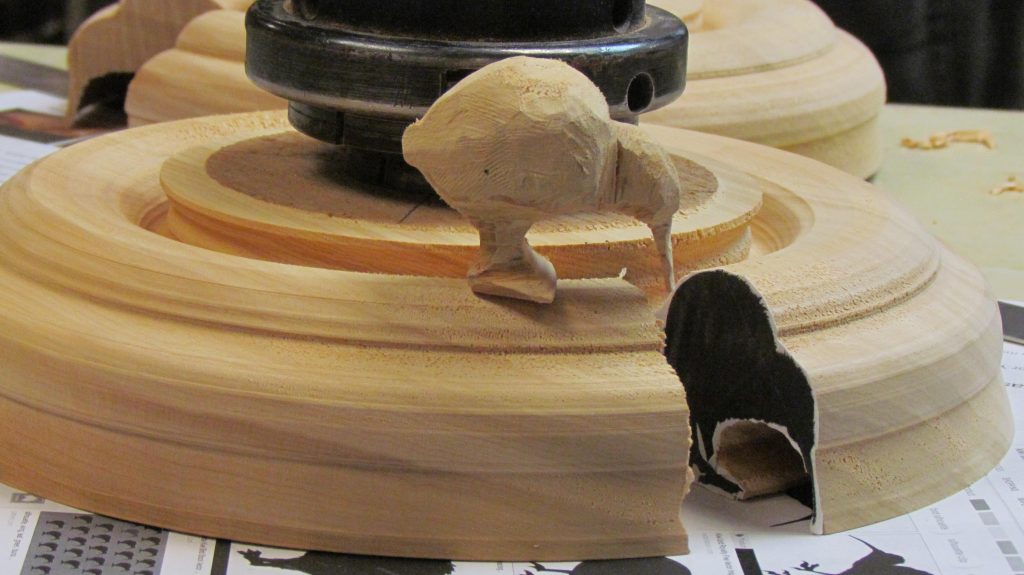
Definitely something quite different and certainly a challenge.
